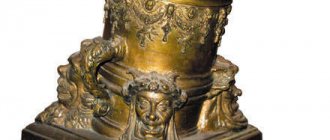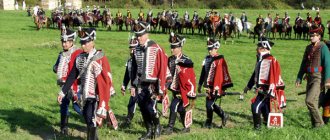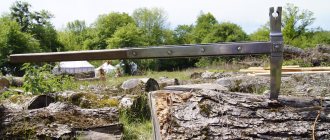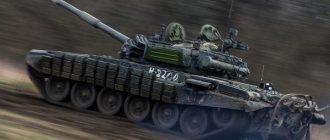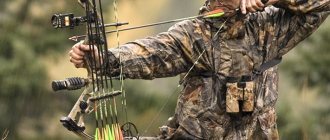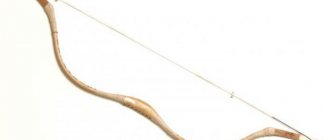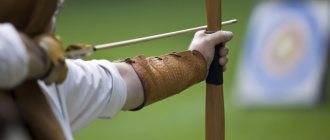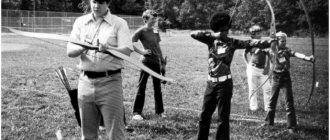During the second week of Fortnite Season 6, you'll be introduced to a new set of challenges. While many of them aren't wildly difficult, some will require a little effort on your part. The first thing that might give you trouble is crafting the Mechanical Bow, Mechanical Burst Bow, and Mechanical Shockwave Bow. The main obstacle is simply knowing what materials are needed to create each weapon.
Some of these materials are harder to find than others, but luckily we have some tips to help you out. In this guide, we'll show you how to craft each weapon needed to complete the mission. Here's how to craft the Mechanical Bow, Mechanical Burst Bow, and Mechanical Shockwave Bow in Fortnite
To learn more:
How to create a mechanical bow
The first step in this test is to create a mechanical bow. You can do this by combining any bow you find in the world with four mechanical parts.
Necessary materials:
- Any bow
- Four mechanical parts
As always, refer to our Fortnite crafting guide if necessary. The easiest way to find mechanical parts is to destroy the equipment. You can find them at the junkyard in Catty Corner or at the trailer park in Weeping Woods. You can also take them from enemy players after you destroy them. Luckily, bows are quite common and are usually found inside buildings and huts.
However, keep in mind that you must craft the Mechanical Bow before you can craft the next two weapons.
Terms of onion parts. Archer's Dictionary
The bow, for all its apparent simplicity, is a rather complex weapon. Additionally, there are several types and types of different bows. To understand all the subtleties, you need to clearly understand what a particular term means. The proposed dictionary will help you cope with this task. For easy searching it is divided into sections.
- Types and shapes of bows
There are two types of bows:
A simple bow is an arch made from a single piece of flexible material, in the shape of an ordinary stick, by pulling the bowstring. The historical simple bow was made exclusively from wood.
Composite bow – made by combining several types of material. Historical - from several types of wood, which are reinforced with horn plates on the inside and tendons on the outside. Modern ones are made of metal alloys, different types of plastic, wood and others.
Bows have different shoulder shapes and are classified according to this criterion.
- Classification of bows by shape
Straight bow – the limbs of which are straight and have no bends. Modern straight bows, unlike historical ones, are composite. They do not imply high accuracy, relying on speed and massive attack. Shooting from them is carried out intuitively. These are non-removable bows of large sizes.
The bow is recurved (recursive) - its design involves bending the shoulders in the direction opposite to the shooter. They vary in depth and shape of the bend. They have greater power due to the fact that at the moment of extension the shoulders make a double movement, which increases the speed of extension and increases the energy transferred to the arrow. The shape of a recurve bow can be open, closed, compressed or deep.
Flatbow – The limbs are flat and significantly wider than regular longbows.
Long bow - has a rounded cross-section of the arms.
photo. Recurve bow
The design features of certain bows differ in the placement of the arrow.
- Boom position relative to the longitudinal axis
Each bow, regardless of its shape, has a longitudinal axis of symmetry, which coincides or does not coincide with the location of the arrow.
Central bow - assumes the axis of the arrow coincides with the axis.
Peripheral bow - a type of bow in which the axis of the arrow does not coincide with the axis, but passes to the side of it.
Bows also have other design differences regarding the shoulders, string tension, etc.
- Differences between bows based on design features
A classic bow does not include reinforcing elements in its design. The strength of the bow comes solely from the elasticity of the arms. This type includes a simple and recurve bow.
Block bow (compound) - has a complex system of blocks and cables. This greatly increases the power of the bow. Even if his shoulders are small, the pulleys and cables provide him with significant power. The most compact and most powerful type.
Large bows look very stylish, however, transporting them can be quite problematic. Therefore, two variants of bows have been developed and are being successfully produced.
The bow is solid - the limbs and the handle are inseparable from each other, since they are a single, non-separable part that makes up the arc of the bow.
A collapsible bow - the design of which involves separating the handle from the shoulders. Such a bow is much more compact than a solid one and is quite easily transported.
Depending on the purpose of use, there are different bow models that differ from each other in technical and design features.
photo. Compound Bow
- Differences in bows by purpose of use
Sports bow – designed for use in sports competitions at various distances. It must comply with the standards adopted by the International Federation. This is a complex, recurve, deep, central bow of a collapsible design. The combined bow is made of fiberglass. Depending on the configuration, it is used for fishing, hunting, long-distance shooting and target shooting.
Olympic bow (Olympic) is a sports bow created specifically for the Olympic Games, meeting established standards. Its design is identical to that of the English longbow, with a stabilizer and sight installed.
The Acheri-biathlon bow is a type of sports bow, the power of which does not exceed 18.85 kgf. The sight and stabilizer are installed no more than 5 cm from the highest point of the bow.
A bow for long-distance shooting has a significant draw force and is designed to hit a target located at a considerable distance.
Hunting bow - bows of special power, compact ones, as a rule, have a quiver mount in their design.
Bow for fishing - with an installed reel for fishing line, equipped with arrows with a special tip.
A bow for fun - with a low draw weight, does not require long distances, high power and special accuracy.
Collectible bow – made for private collections, museums, specialized clubs and groups.
A traditional bow is a modern bow that retains the appearance and basic design principles of ancient bows.
Historical bow is a term used to describe bows used in ancient times.
Since the bow, supplanted by firearms, ceased to be a weapon used en masse, its development in this direction did not occur. However, bows intended for sports shooting have been improved and modified constantly. Today this is the most advanced type of bow. The set of sports bows includes all the parts that can be included in any of the bows.
- Terms denoting parts of the onion
The handle (handle) is a part located in the center of the bow’s arc and makes up its central part, to which the shoulders are attached. A sight, stabilizer, shelf, sides and clicker are installed on the handle.
The aiming window is a special cutout located in the handle for aiming.
The resting point is a place on the handle intended for hand grip.
Shoulder fastening device - special parts located on the end parts of the handle are used for fastening and adjusting the shoulders.
Shoulder - parts of the bow that form its arc and accumulate energy. It serves to generate and transmit force to the arrow.
The inner side of the shoulder is the surface of the lower or upper shoulder facing the archer.
The outer side of the shoulder is the surface of the upper or lower shoulder directed towards the target.
The bowstring is a cord stretched across the shoulders of the bow, which serves to transmit the energy generated by the extension of the shoulders.
Technical string - a cable used in a complex system of eccentrics, necessary for the initial bending of the arms of a compound bow.
String Loop - loops at both ends of the string designed to secure it to the limb of the bow.
Safety winding is a special coating that protects the bowstring from aggressive influences. It is a braid made of a special braid of durable thread.
Bowstring socket is a special device located on the bowstring, designed to accommodate the arrow shank.
A retainer is a part on the bowstring necessary to fix the position of the bowstring at the archer’s lips.
A sight is a device used to aim a bow at a target. Most models of modern sights are equipped with a built-in level. With its help, you can easily and most accurately check the correctness of the sight and determine how level the bow is held.
photo. Bow sight
A diopter or peep sight is a type of sight that creates a fixed aiming point, which makes the aiming process much easier. The peep-site for a hunting bow has a large diameter, as it should provide comfortable aiming in poor visibility conditions.
The front sight is the front part of the sight, along the top of which there is a sight line from the aiming slot to the target.
A clicker is a spring that is attached to the handle, with its help it is easy to determine when the arrow tip passes the control mark indicating the amount of tension.
The pad is a part used for a comfortable grip. Installed on the handle.
Stabilizer is a device that serves to reduce vibration and stabilize the position of the bow.
A shelf is a special horizontal support on which the boom is placed.
Sidewall - side support for the arrow.
Plunger is a part for adjusting the position of the boom and the force of movement of the side rod under the action of a spring. It is installed on the handle in the inward direction.
During a shot, the direction of the arrow is shifted to the left (for a right-hander) or to the right (for a left-hander). At the moment the shot is fired, the bowstring, rolling down the fingers, moves the tail inward, towards the archer. This will cause the arrow to bend and reduce accuracy. The plunger is designed to reduce this effect.
Arrows are used as projectiles. They differ in shape, method of application, use of tails and tails, which depend on the purpose of shooting.
- Terms used in relation to projectile parts
The arrow shaft (shaft, tube) is the main part of the arrow; all other elements of the projectile are attached to it. The shape of the shaft comes in several types:
- cylindrical;
- cigar-shaped;
- conical and double-sided conical.
Rods are made from several types of wood (mainly for Olympic, traditional and collector's models), carbon, metal alloys, fiberglass and carbon fiber.
An arrowhead is a pointed, metal or wooden part of a projectile, making up a single, non-removable structure or, conversely, easily separated from the shaft. For sports competitions, hunting, and fishing, tips of different shapes are used: conical, bullet-shaped, and double-cone-shaped.
An arrow shank is a plastic part that is the tip of the shaft. This is the back part of the arrow to hold the projectile in the socket, providing a strong hold while drawing the bowstring.
Insert – adapter insert or coupling insert. A special detail to prevent damage to the arrow shaft if one hits the other.
The rod cone is a specially designed part of the projectile rod that is used to install the shank on it.
The arrow fletching is an important element of the projectile. Gives direction and supports the projectile in flight, and also ensures its visibility by the archer, and distinguishability from other people's arrows. The latter is especially important for sports competitions. Consists of three feathers located around the arrow tube at the very end.
The fletching is involved in the process of reducing the bending resulting from the displacement of the shank when the bowstring strikes it. This occurs due to the twisting of the arrow along the flight axis. The result of this twisting is a decrease in the lateral rotational motion and stabilization of the projectile flight.
The middle of the arrow is the point that coincides with the geometric center of the projectile.
Arrow length - refers to the size from the tip of the tip to the supporting surface of the shank on the bowstring.
The center-to-center distance of the boom is the distance from the middle of the boom to its center of gravity.
A projectile for hunting fish is an arrow inside the shaft of which there is a special hole through which the fishing line passes, as well as a mount for fixing it and a removable tip of a special shape.
Sports arrow - made in the form of a pointed bullet-shaped fairing. Thanks to this shape of the boom, its aerodynamic properties are significantly increased.
An arrow for hunting - involves inflicting the maximum possible damage, therefore it is equipped with a tip consisting of four sharpened blades, with different configurations of its front part.
Traditional arrow – produced specifically for traditional bows, as close as possible to ancient models.
A small arrow that has no fletching is called a “bullit” and is intended for crossbows.
Photo. Bow arrows
- Accessories for storing and transporting bows, arrows and other accessories
A quiver is a device for storing and transporting arrows. Attached to the belt or worn on a belt behind the back.
A shako is a type of quiver that is attached to the body of a hunting small arms weapon.
Stowage box (case) – a case for storing and carrying a bow, arrows and other parts and accessories.
photo. shako
- Archery accessories
To protect parts of the archer's body, various devices are provided.
Finger guard - put on the fingers in order to eliminate pain and injury from the pressure of the bowstring.
The ring is a fingertip for the thumb. It is put on with the petal facing forward and has a special groove with rounded edges. The string rolls down the petal and throws the finger away without causing pain or discomfort.
A guard is a shield worn on the hand that protects it from impact when the bowstring is released.
Breastplate – protecting the archer’s chest from being struck by a bowstring.
For convenience and comfort of shooting and loading the bow, special devices are also provided.
Bow holding strap - is a leather belt, cord or chain with which the bow is connected to the hand, which prevents the bow from falling after the shot is completed.
String strap – special leather straps that hold the bow stationary while pulling the bowstring. Attached to the leg and hips.
Bowstring cord - a cord equipped with two loops at the ends, designed to tighten the bowstring.
The uncoupler is an additional mechanism that facilitates the capture and release of the bowstring on compound bows.
- Terms used to describe the actions of the shooter
Stretching is an action performed by an archer in a working position, which consists of moving the bowstring with an arrow fixed in the socket back, along the lower cheekbone.
Full tension - the end of the stretching process, when the hand with the bowstring is pulled back to the limit, the bowstring is stretched to its maximum. In a compound bow it matches the wall of the bow.
Bow wall (stop) - indicates the position of the compound string in which further tension is impossible.
The initial position is the position taken by the archer on the shooting line, confirming readiness to fire.
Working position is the archer’s posture necessary for aiming and firing, which includes a number of actions: stretching the bowstring to full tension, aiming, firing a shot.
Aiming is the actions performed by an archer aimed at making an accurate shot.
Drawing is bringing the bowstring to full tension.
Grip - the position of the hand on the bow handle necessary to hold the bow in working position.
- Meaning of terms used to describe technical characteristics
Bow strength (tension force) is a physical quantity measured in kilogram-force (Kgs), or pounds (Lbs) according to the European standard. Indicates the force that must be applied to fully draw the string, depending on the type of bow. In a regular bow, this value is measured at a length not exceeding 75 cm. And in the case of compound bows, this length is determined by the tension settings.
Bowstring holding force is the physical force exerted by the archer to hold the bowstring during draw. It is measured, like the strength of a bow, in Lbs or Kgs. For ordinary bows of a classical design, this indicator is equal to the strength of the bow itself. And for compounds it is reduced to 80 percent of this strength.
To choose a bow with the most suitable strength indicators, you need to take into account the ratio of the tension force and the weight of the archer.
Draw length (stretch length) - determined by the distance from the handle stop to the bowstring socket at the moment of its final tension. Recurve bows can be drawn at different distances. With compound bows, the draw length is limited by the stop. It can be neither more nor less than what is set by the settings. To change this value, the compound must be reconfigured.
Arm span is the distance from the tip of the middle finger of the right hand to the tip of the middle finger of the left hand. It is necessary to measure your arm span in order to choose the ideal draw length for the archer. The ratio of stretch length to arm span can be seen in the table.
Advice! Setting the stretch according to the individual characteristics of the shooter ensures accurate and comfortable shooting.
The initial flight speed of an arrow is the speed developed by the projectile at the moment it leaves the string.
- Spatial notations
Bow plane - indicates the vertical plane where the bowstring is stretched.
Firing plane – passes through the departure point and the midpoint of impact.
The shooter's base is the correspondence of the position of the base points necessary for aimed shooting.
The base point is the constant position of the hand stretching the bowstring at certain points:
- the first, the point of contact of the bones of the hand with the bones of the face. It is necessary to choose the most convenient location for the location of this base point.
- The second is the point at which the tip of the nose or chin touches the bowstring.
- The third is a pip site if you use it.
Understanding technical terms is especially important when choosing a bow.
How to Create a Mechanical Explosive Bow
Once you craft the Mechanical Bow, you will have the option to build the Mechanical Explosion Bow and the Mechanical Shockwave Bow. You can craft them in any order, but in our experience it's easier to find the materials needed for a Mechanical Explosive Bow.
Necessary materials:
- Mechanical bow
- Six grenades
To craft a bow, you will need the aforementioned Mechanical Bow and six grenades. Grenades are quite common and can be collected from chests and found on the ground in major hubs, so we recommend hitting every chest you come across.
Advantages and disadvantages of weapons
The crossbowman has more advantages when shooting:
- Longer arrow range.
- Higher lethal force.
- More precisely, hitting a target located far ahead.
- Handling weapons does not require special skills.
The crossbowman has a great advantage when shooting.
The throwing design also has disadvantages:
- The rate of fire is low.
- Heavy weight, sometimes requires a stand for shooting.
The positive qualities of onions are:
- The ability to destroy the enemy from a distance.
- Rate of fire 8-10 rounds per minute.
- Readiness to fire is almost instantaneous.
Flaws:
- You need to work hard on your skills and train regularly.
- Useless in close combat.
- If the enemy is wearing complex armor, the arrow will not penetrate them.
A crossbow will not penetrate heavy armor.

